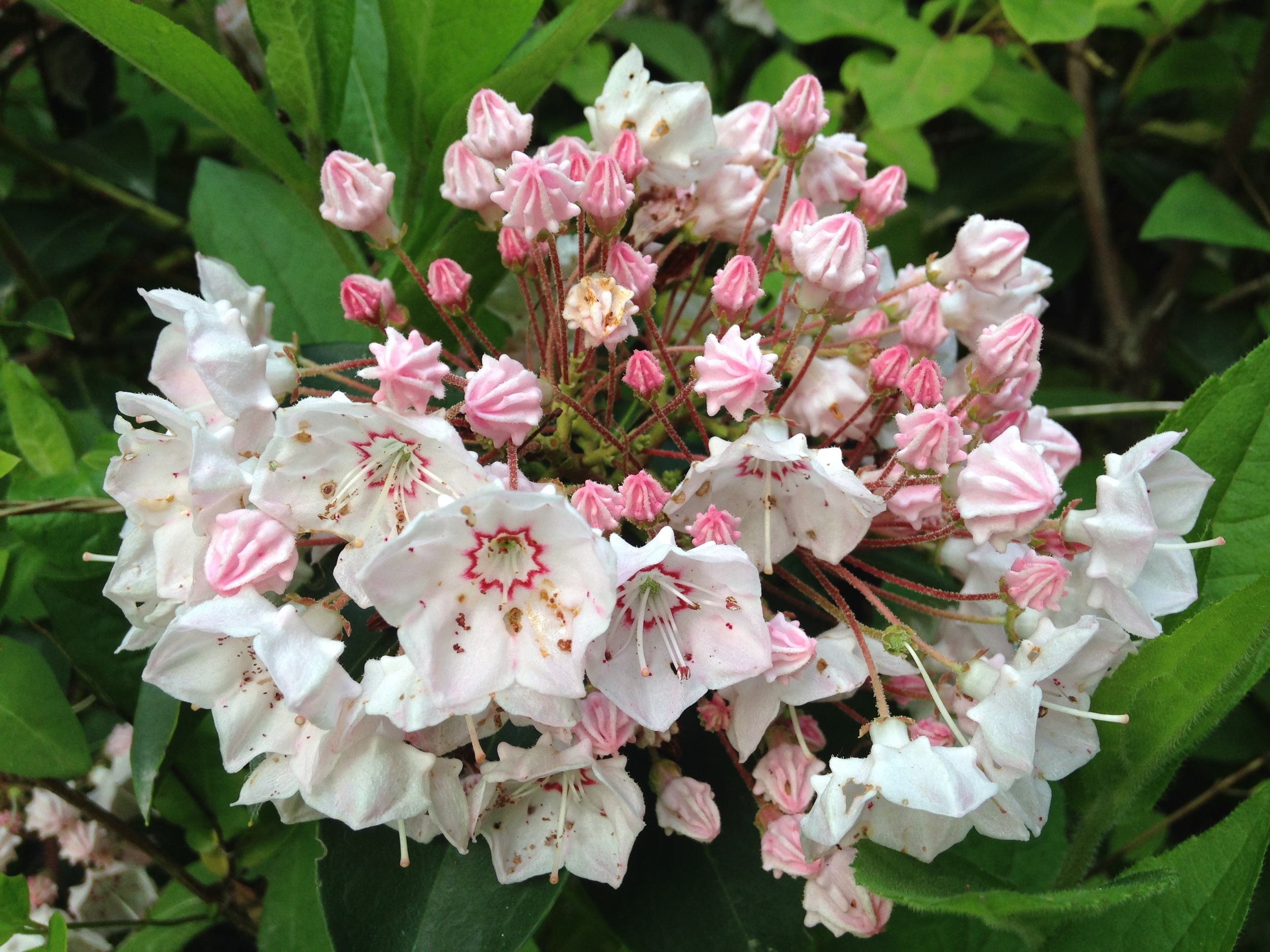Mountainsides awash with blooming mountain laurel (Kalmia latifolia) are truly a spectacle. Seeing a sea of pinks, whites, and greens humming with pollinators makes you wonder why such a sight isn't talked about more outside of its range. Why hoards of tourists don't time their seasonal migrations around the blooming of this species is, to me, quite a mystery.
Mountain laurel was a shrub I was quite familiar with growing up. As a child, their shaded tunnel-like understory were some of my favorite places to explore and catch bugs. After moving to New York, I soon forgot about this shrub. Other species became my familiar backdrop. It took visiting the mountains of North Carolina to reawaken these long forgotten memories.
Mountain laurel is generally considered a shrub. In wet, humid areas in the Appalachians, they can readily reach a stature more fitting of a small tree. They are evergreen, holding on to their beautiful leaves throughout the winter. This helps save energy, which is especially useful in poor soils. It also allows mountain laurel to get a head start on photosynthesis as soon as temperatures become favorable.
My favorite part of this shrub are its flowers. Deep pink textured buds soon give way to a floral display that will knock your socks off. Each flower ranges in color from white to pink. Each bloom demands a closer inspection. They are ringed in tiny pockets, each housing an anther. As the flower opens, the pockets hold on to the anthers, drawing them tight. When an insect, especially a bee, disrupts the pockets, the anthers spring out of the pockets and bash the insect with pollen. Each visit is like stumbling into a army of tiny pollen-laden trebuchets. This can easily be simulated using a small stick.
Further Reading:
http://bit.ly/25eAwzI
